We will never know who was the first person to notice the appearance of a “tailed star” in the sky. But we can say for sure that for most of human history, it was comets that were the heavens’ main troublemakers. Their visits were associated with wars and epidemics, and their very existence seemed to challenge the foundations of the geocentric system. Even in modern times, when comets have lost their halo mystical allure, they still continue to frighten people. After all, what was the well-known comet panic all about?
Therefore, our conversation today will be devoted to comets. In the first part, we will talk about how astronomers uncovered the secret of comets’ origins and determined where they come from in the solar system.
Harbingers of trouble
Mankind has been observing comets for thousands of years. Records of their appearances can be found in ancient Chinese chronicles and on clay tablets found among the ruins of Babylon. Unable to explain the nature of these “tailed stars,” people usually viewed them as some sort of sign of divine will. Thus, a comet observed in 44 BCE was interpreted as a sign that the recently murdered Julius Caesar was now among the gods.
But most often, comets were associated with imminent upheaval and trouble. The most prominent instance of this was the famous Halley’s Comet. Its visit in 451 CE was associated with the Battle of the Catalaunian Plains, which ended with the defeat of the army of Attila the Hun. The arrival of Halley’s Comet in 1066 was later called a harbinger of the Battle of Hastings, which led to the Norman conquest of England. Also widely known was the comet’s flyby in 1811, which was retrospectively associated with Napoleon’s invasion of Russia.
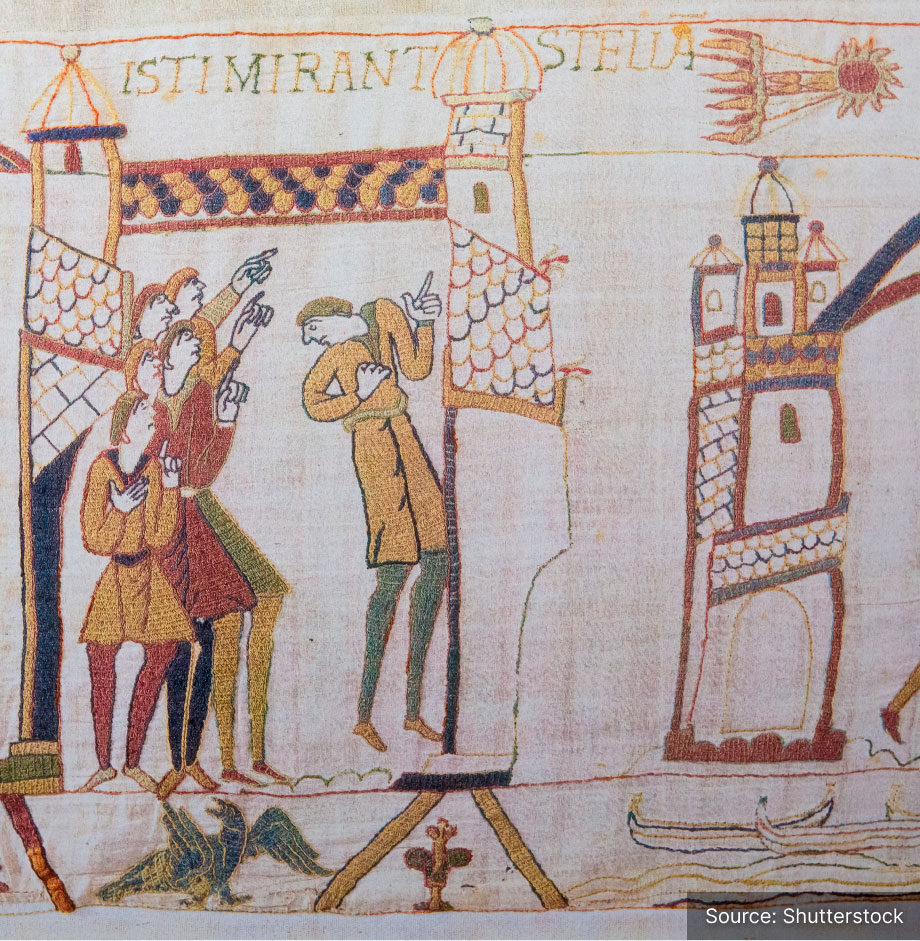
But despite these mystical ideas, ancient thinkers attempted to uncover the secret of the nature of comets. One of the first hypotheses on this subject was put forward by Aristotle, who believed that comets were caused by air being ignited. Many subsequent ancient thinkers argued against Aristotle’s thesis, pointing out that the nature of the movement of comets indicates that they must clearly be outside the “air sphere.”
Some ancient scholars went even further. Indian astronomers put forth the theory that comets return to Earth and even made attempts to calculate the frequency of their visits. However, back in Europe, by the Middle Ages, the Aristotelian theory that comets were formed in the atmosphere remained firmly entrenched.
The situation began to change only with the arrival of the Renaissance. In 1472, the astronomer Regiomontanus made the first, very crude attempt to determine the distance between the Earth and a comet he observed. Tycho Brahe’s calculations played a much more significant role. He was able to measure the parallax of the great comet of 1577 and show that it was at least four times further away from the Earth than the Moon. This meant that comets could not be an atmospheric phenomenon.
Not all scientists initially accepted this conclusion (Galileo, for example, considered comets to be mere optical illusions until the end of his life). But over time, the idea that comets were bodies traveling through the solar system became entrenched in the astronomical community. The next milestone was the Great Comet of 1680, which was the first comet in history to be found with a telescope. Isaac Newton used its motion to confirm Kepler’s laws.

But the final turning point came down to Edmond Halley. He calculated the orbits of more than two dozen comets and drew attention to how similar several of them were in their parameters. At the same time, the intervals between their appearance were 75-76 years. Halley put forward the bold assumption that these comets were in fact a single object. In 1716, he published detailed calculations, predicting that the comet would next return in 1758.
Halley himself did not live to see this date. But on December 25, 1758, astronomer Johann Palich actually spotted the comet Halley had predicted. This event was the first triumphant confirmation of Newton’s law of universal gravitation. The comet was named after Halley in honor of his achievement.
The life cycle of comets
The emergence of more powerful telescopes and the advent of photography allowed astronomers to significantly expand their understanding of comets. Astronomers discovered that they are very small bodies that move around the Sun in extremely elongated orbits.
The brightness of comets is explained by the fact that their surface is covered with a large amount of volatile substances. As they approach the Sun, they begin to evaporate. As a result, the comet acquires a coma (a gas and dust shell surrounding it) and a tail. While the diameter of a comet’s nucleus is usually several dozen kilometers, the length of their tails is measured in many millions of kilometers.
When, in 1910, astronomers conducted a spectral analysis of the tail of Halley’s Comet, they found cyanide and carbon monoxide in it. Since the Earth had to pass through the tail, this news provoked a small panic in the United States that the gasses from the comet’s tail would be deadly for people on Earth (“anti-comet” protective masks and pills even went on sale). But of course, nothing of the sort actually happened. The fact is that despite their gigantic length, comet tails are so diffuse that they physically cannot have any effect on the Earth’s atmosphere.

The more astronomers observed comets, the more clear it became that they can be divided into two main groups. The first are short-period comets, which move in orbits with a period of revolution of less than 200 years. Halley’s Comet is the best known member of this category.
Since short-period comets regularly approach the Sun, they quickly lose all their reserves of volatile substances. Halley’s Comet is believed to have already lost about 80 – 90% of its original mass (which means that its previous visits were clearly much more spectacular than now). When it completely loses all volatile substances, it will become a “burnt out” comet, and no longer show any visible activity, making it difficult to distinguish from an ordinary asteroid.
According to astronomers’ calculations, the average lifetime of a short-period comet ranges from several hundred thousand to a million years. This raises a logical question: if comets “burn out” so quickly, then why can they still be seen in our sky? The fact is that their numbers are sometimes “replenished.” From time to time, so-called “long-period comets” arrive from the far reaches of the solar system. These comets have periods of revolution that are tens or hundreds of thousands –and sometimes even millions– of years, but the Sun can change that. Comets that approach the Sun for the first time are on average more fragile, which is explained by the fact that they contain a very large amount of “primordial” substances left over from the formation of the solar system. Because of this, sometimes they do not survive flying by our star and break up.
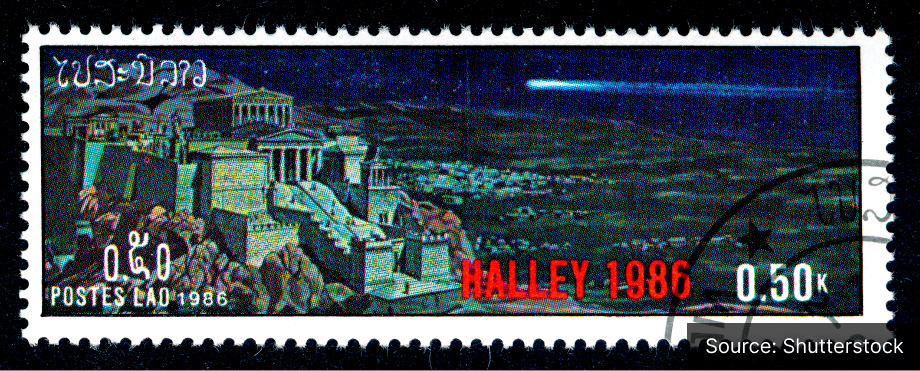
Another possible explanation is that the orbit of a long-period comet changes in such a way that after approaching the Sun, it leaves the solar system forever and goes into interstellar space. In turn, this means that some of the comets that come to us may also be guests from other star systems. In 2019, astronomers managed to detect the first such object in history, called 2I/Borisov. After approaching the Sun, it headed again into interstellar space.
As for those long-period comets that successfully approach the Sun and do not go into interstellar space, then over time they move into closer orbits, replenishing the population of short-period comets.
Relatively recently, astronomers learned about the existence of another subpopulation of comets, called sungrazing comets. At their perihelion point, they come extremely close to our star, sometimes flying at a distance of only a few thousand kilometers from its surface. As a rule, such comets are small in size (most often from 10 to 50 meters) and completely evaporate during their approach to the Sun.
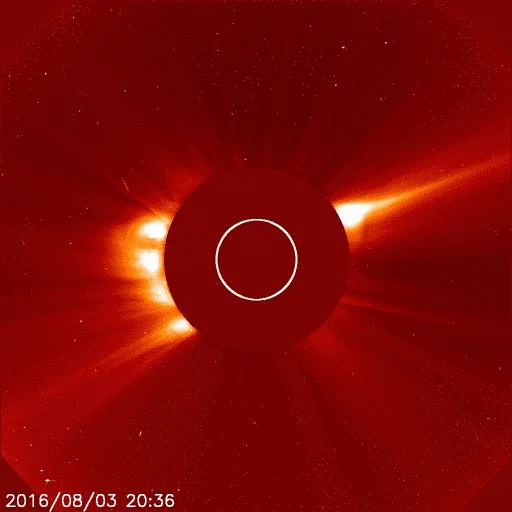
Over 85% of sungrazer comets known to us are part of the Kreutz group. These are fragments of a giant icy body that broke up about 2400 years ago. Most of them are small, there are rather large fragments among them that were clearly visible in the earth’s sky and became “large” comets.
Sungrazer comets are extremely difficult to detect through ground-based observations. The situation changed after the launch of the SOHO solar observatory in 1995. Looking at images from the satellite, scientists were surprised to find that near-solar comets often fall into its view. Sometimes, the spacecraft is able to photograph a dozen of them in a week.
Where comets come from
As we have already said, long-period comets arrive from the far reaches of the solar system. Their visits occur as a result of gravitational perturbations that change their orbit, like those caused by periodic approaches of the Sun with other stars. In turn, this means that somewhere on the outskirts of the solar system there must be a giant comet “store.” This is called the Oort cloud.
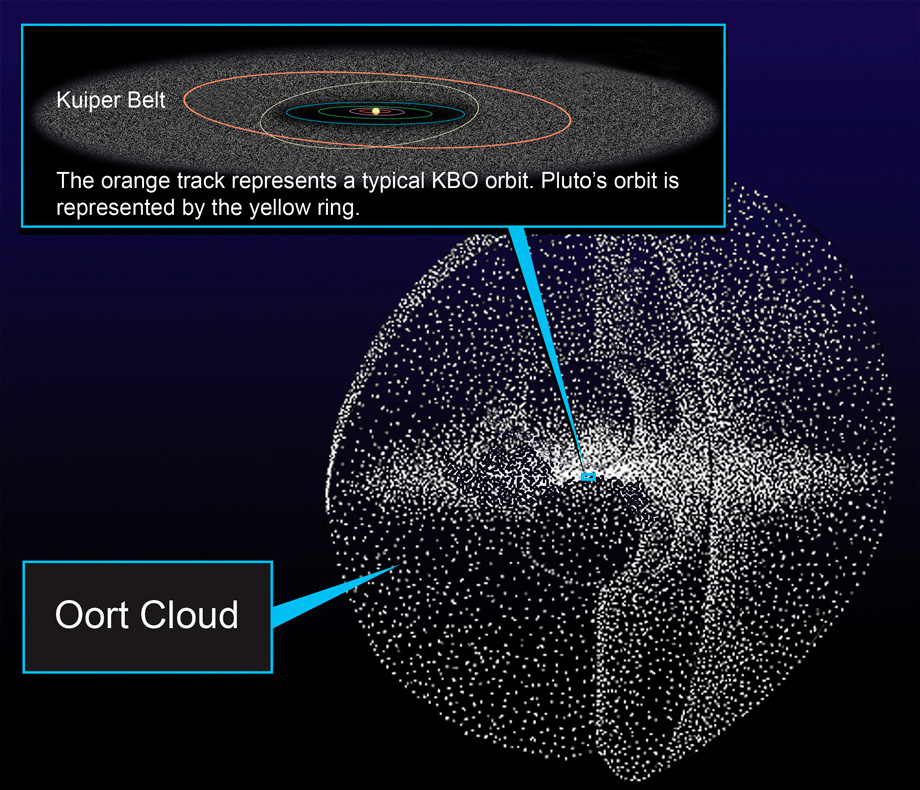
Despite the fact that astronomers cannot yet directly observe the Oort cloud itself, few now doubt its existence. It is believed to consist of two regions: an inner disk and a spherical outer region. According to scientists, the inner boundary of the cloud passes at a distance of 2000 – 5000 AU from the Sun, while the outer one is at a distance of at least 50,000 AU (almost a lightyear). The boundary of the cloud actually corresponds to the boundary of the solar system.
But where did the Oort cloud come from? It is the remnant of the original protoplanetary disk from which the Earth and other planets formed 5 billion years ago. Most likely, the orbits of the icy bodies inhabiting once passed closer to the Sun, but the consequences of gravitational influence with the giant planets gradually moved them to the far reaches of our system.
At the moment, astronomers have a fairly rough idea of the structure of the Oort cloud. But even the most modest estimates suggest that it is inhabited by trillions of comets over one kilometer in diameter. Their total combined mass is at least several times greater than the mass of the Earth. Thus, the Oort cloud contains several orders of magnitude more material than the main asteroid belt and the Kuiper belt put together.
The role of comets in the origin of life on Earth
Comets are of interest to astronomers not only for their beauty, but also for the role they have played in the history of our planet, which is, without exaggeration, tremendous.
On the one hand, comets justify their bad reputation by bringing destruction. We received visual confirmation of this in 1994, when Jupiter endured a real bombardment by debris for the Comet Shoemaker-Levy 9.
The fallout from Shoemaker-Levy 9 far exceeded astronomers’ wildest expectations. During its entry into the atmosphere, the comet’s fragments formed giant fireballs with an internal temperature reaching 24,000° C. The total amount of energy released during the fall of only one of the largest fragments of the comet was estimated at 6 thousand gigatonnes in TNT equivalent (600 times more powerful than the entire nuclear arsenal of mankind). Immediately after the impact, clouds of hot gas rose in Jupiter’s atmosphere, and huge dark spots remained in place of the fallen debris, which then remained for a year.
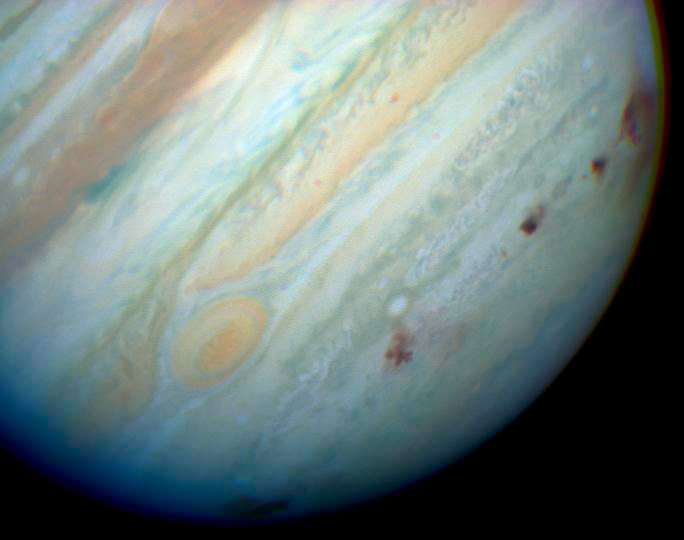
Of course, Jupiter is not the only planet in our solar system that has experienced such a bombardment. Plate tectonics and erosion have hidden most of the craters from the earth’s surface. But to date, astronomers have already found many traces of ancient impacts on our planet. Some of them were left by asteroids, while others came from comets. It is possible that these “tailed stars” caused at least some mass extinctions that brought the biosphere of our planet to the brink of death.
At the same time, although comets almost destroyed (and possibly will destroy) life on Earth, it is quite possible that without them it would never have appeared in the first place. According to a popular hypothesis, it was comets that served as one of the main suppliers of water to the young Earth.
Moreover, we already know that comets are surprisingly rich in complex organic matter. This means that in addition to water, comets could also have brought basic building blocks to our planet, without which life simply would have never had the chance to appear.
In the next part of our series, we will talk about missions to comets that have already been launched and which are planned for the future.





